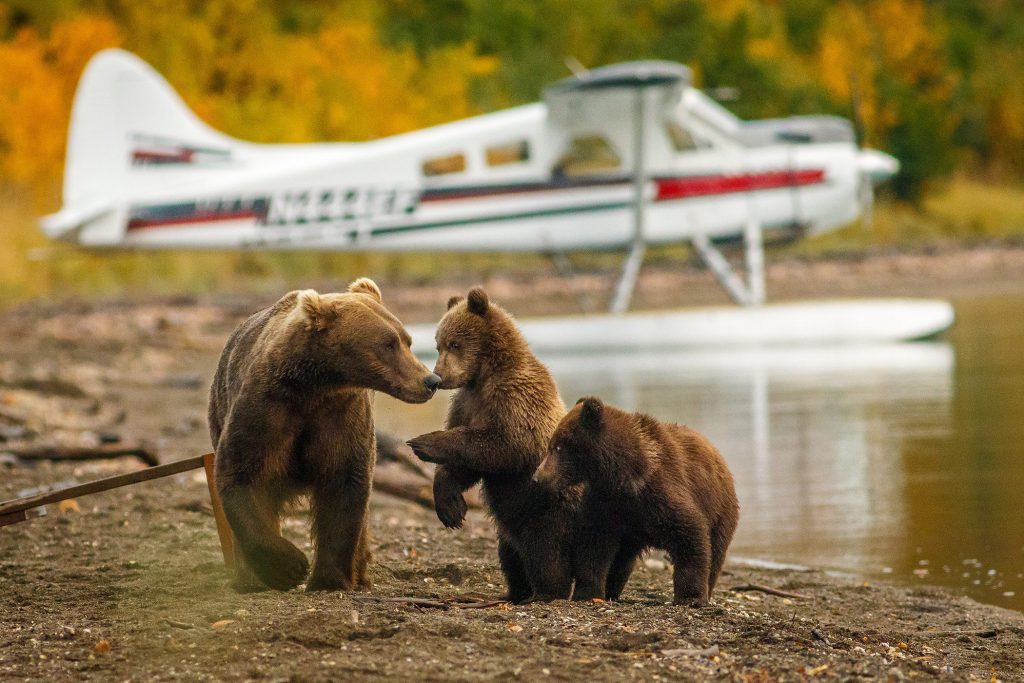
Is the Alaskan wilderness for sale?
Millions of acres of public lands face sale, transfer or exploitation as the Trump Administration signals the start of one of the largest liquidations of public lands in the nation’s history.
Proponents say major upheaval to Alaska’s land and wildlife is necessary to combat the state’s snowballing economic crisis. However, critics argue the Trump Administration’s response is dangerous, short-sided and corrupt.
What is the Trump Administration Attempting to Do?
Although they’re not doing it with much fanfare, the Trump Administration is clearing the path for the liquidation of over 28.3 million acres of public lands. Areas affected included old-growth forests, salmon-spawning streams, hunting grounds and much more.
Of special concern is the Trump Administration’s willingness to allow drilling in the Arctic National Wildlife Refuge. Known as one of the last unspoiled wildlands in the world, the refuge overflows with natural wonders including:
- The largest concentration of polar bears in the U.S.
- The migratory home for a herd of over 200,000 porcupine caribou
Aside from major environmental concerns, drilling in the Wildlife Refuge threatens cultural disruption, too. The native Gwich’in people refer to the coastal plains as “The Sacred Place Where Life Begins.”
Although the Arctic National Wildlife Refuge is arguably the most famous area involved in the liquidation, it’s far from the only area affected. Additional areas at risk include:
- 20,000 acres of the Canning River
- 13.35 million acres of the National Petroleum Reserve
- 8,000 acres of the Pebble Mine Region
- 417,500 acres in the Izembek
- 1.5 million acres related to the public land orders
- 1.8 million acres inside the Bering-Sea Western Interior region
- 448,000 in additional public lands
Overall, it’s poised to be the largest liquidation of America’s public lands since the 19th century, affecting a stunning range of geography, animals and people within the state. Plus, environmental repercussions would be felt worldwide.
Oil, Gas, and the Last Frontier
Alaska’s economy is unique among the 50 states. It’s the least economically diverse. Since 1977, about 85% of the state’s annual budget is from the oil and gas industry.
Unfortunately, the state’s economy is in bad shape, and growing worse each year. The amount of oil flowing through the trans-Atlantic pipeline has plummeted to a quarter of the levels during its peak in the 1980s. The state collects increasingly less in taxes from the oil industry each year. In 2008, tax revenue was $6.9 billion. However, in 2018, revenue dropped to $806 million.
At the start of the year, Alaska faced a $2.5 billion budget shortfall. By June, the governor had cut more than $440 million from the state budget.
A whole host of city services have suffered as a result including public schools, emergency response capabilities and access to health care. Additional proposed cuts are on the horizon, including the bankruptcy of the University of Alaska system.
A Way to Save the Day or a Misguided Effort at Recovery?
Governor Michael Dunleavy and the Republican-led state government need plans to stave off economic disaster. In a way, the idea of opening up lands for use by the oil and gas company makes sense. If the state’s economic health is so intertwined with the oil and gas industry, increasing opportunities for the industry should increase the health of the entire state.
However, there’s a lot of evidence to suggest Dunleavy’s efforts might be in vain.
First, drilling into the refuge won’t produce refined oil until at least 2030 – and that’s an optimistic estimate from the pro-drilling American Petroleum Institute. Drilling might increase jobs in the short-term for some, but it won’t boost the state coffers anytime soon.
By 2030, significant portions of the country, and even the world, will have moved away from a transportation system dependent on oil. Drilling the refuge will create as much carbon pollution as adding 13 million cars, but the resulting oil won’t have nearly as much use in 12 years than today.
So, if drilling won’t relieve Alaska’s financial issues, and the oil produced isn’t necessarily needed, then why is the liquidation occurring at all?
Potentially, for personal profit. For example, Joe Balash is a former official with the Department of the Interior who developed the process for auctioning off the public lands. Once the process was in place, he resigned from his position to accept a top job at a foreign oil company. Now that company is considering bidding on land. He’s just one example of many former Trump officials to land a powerful job in an industry they recently regulated.
What’s Next for Alaska?
Massive land liquidation isn’t the only environment issue Alaska faces. The Trump Administration is pushing to allow logging in the Tongass National Forest, the world’s largest temperate old-growth forest. Any change to the forests threatens to disrupt one of the country’s most powerful carbon sponges, endangering Alaska’s billion-dollar commercial salmon industry.
The Trump Administration’s anti-environmental policies are no surprise at this point, but the plan to liquidate Alaska’s public lands stands out because the benefits appear minimal at best. Although investigations and court challenges stand in the way for now, ultimately the people of Alaska must decide how to manage the natural beauty of their state.



Leave a Comment